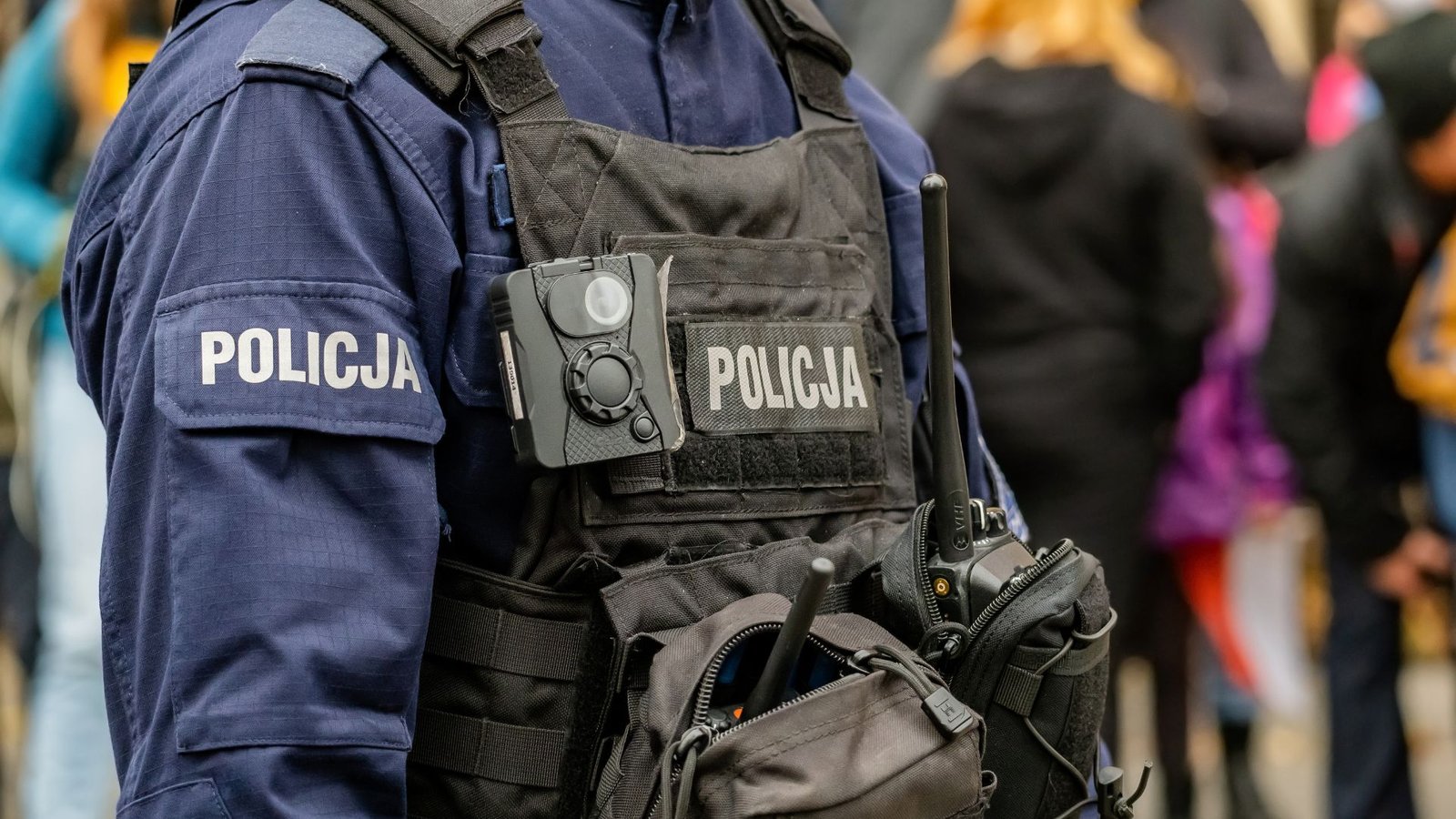On this page you will read detailed information about Impact of Body-Worn Cameras on Police Transparency.
As a law enforcement officer, you have experienced firsthand the controversies surrounding police transparency and accountability. With the proliferation of cell phone videos and demands for reform, body-worn cameras have emerged as a potential solution. But do these cameras truly improve transparency, or do they create new problems? In this article, you will examine the complex impacts of body-worn cameras through an in-depth analysis of relevant studies. Weighing the evidence on both sides, you will gain a nuanced understanding of how body-worn cameras affect public trust, police behavior, privacy rights, and more. The goal is not to render a simple verdict, but to grapple with the messy realities of implementing new technology in complex human systems. Only by embracing the uncertainties can we develop evidence-based policies that harness the benefits of body-worn cameras while mitigating the risks.
An Introduction to Body-Worn Cameras for Police Officers
Body-worn cameras (BWCs) are small cameras affixed to the uniform or equipment of police officers to capture audio and video recordings of police-public encounters. BWCs have been adopted by police departments across the United States and around the world to promote transparency and accountability.
How Do Body-Worn Cameras Work?
BWCs are compact cameras that can be mounted on an officer’s uniform, eyewear, or helmet to capture point-of-view footage. The cameras record audio and video that is then uploaded to a digital storage system for review and retention. Most BWCs have pre-event recording that captures footage even before the officer activates the camera so that important context before an event is not lost. The footage from BWCs provides an objective record of police-public encounters that can be used to review police conduct and investigate complaints.
Benefits of Body-Worn Cameras
BWCs provide several benefits to police departments and communities. They promote police transparency and accountability by providing an objective record of events. They can also be used to investigate complaints against officers and identify potential issues with police conduct. BWCs may also improve police-community relations by increasing transparency and accountability. Furthermore, BWCs provide more comprehensive evidence for prosecuting cases. The footage from BWCs also provides valuable data that can be analyzed to improve police training and policies.
Challenges of Implementing Body-Worn Cameras
However, there are also challenges to implementing BWC programs. They are expensive to implement and maintain, requiring investments in equipment, digital storage, and staff to manage the program. There are also privacy concerns about the collection and retention of footage. Strict policies must be put in place to govern when cameras are activated and how long footage is retained. There are also questions about whether BWCs actually achieve the intended goals of reducing use of force incidents and complaints against officers. More research is still needed on the impacts of BWC programs.
BWCs show promise for promoting transparency and accountability in policing. However, more work is needed to address the policy, privacy, and resource challenges of developing BWC programs that maximize the benefits and minimize the risks. With well-designed policies and oversight, BWCs may significantly improve police-community relations and officer conduct.
In the previous post, we had shared information about Understanding Your Legal Rights in the American Workplace, so read that post also.
The Benefits of Body-Worn Cameras for Improving Police Transparency
Increased Accountability
Body-worn cameras provide an objective record of police-civilian encounters that can be used to hold officers and community members accountable for their actions. The footage from these cameras offers evidence to investigate complaints of police misconduct or abuse of power. Their presence alone may deter such inappropriate behavior by officers in the first place. In short, body-worn cameras add a layer of oversight and responsibility to police work.
Reduced False Complaints
Body-worn cameras also benefit police officers by providing evidence to refute false accusations of misconduct or excessive force. Studies have shown that when officers wear body-worn cameras, unfounded complaints decrease dramatically. The objective footage allows police departments to conclude more definitively whether or not an officer acted inappropriately. This both protects officers from unfair punishment as well as builds trust between police and the communities they serve.
Improved Behavior
Research indicates that when police officers wear body-worn cameras, their behavior and that of community members improves. Officers tend to follow proper police procedure more closely, and civilians are less aggressive or confrontational. The presence of a recording device encourages all parties to act respectfully and responsibly. Over time, this positive effect on behavior could help repair police-community relations and make encounters safer for both officers and civilians.
In summary, body-worn cameras are a useful tool for promoting transparency and accountability in policing. They have significant benefits for both officers and the public in terms of reduced complaints, improved behavior, and stronger oversight. While not a complete solution on their own, body-worn cameras take an important step toward building trust between police and the communities they serve.
Case Studies on Body-Worn Cameras Improving Community Relations
Rialto, California
A randomized controlled trial in Rialto, California in 2012 found that the use of body-worn cameras led to a 59% reduction in use-of-force incidents and an 87.5% decrease in citizen complaints compared to control groups without cameras. Officers wearing cameras also issued more citations and made more arrests, indicating the cameras may have made them feel more confident in enforcing laws. The results suggest body-worn cameras can strengthen police accountability and improve behavior among both officers and citizens during interactions.
Mesa, Arizona
Mesa, Arizona deployed body-worn cameras to all patrol officers in 2013. A study found that in the year following deployment, use-of-force incidents declined by 75% and citizen complaints dropped by 40% compared to the year prior. Surveyed officers reported the cameras led to improved behavior and professionalism. Community members indicated greater satisfaction with police transparency and accountability. The Mesa Police Department has continued expanding its body-worn camera program, now deploying cameras to special units like SWAT and K9 teams.
New York City, New York
The New York City Police Department initiated a pilot body-worn camera program in 2014. An evaluation found civilian complaints declined from 328 to 124 (a 62% drop) in precincts with cameras compared to a 7% increase in precincts without cameras. Use-of-force incidents declined from 715 to 489 (a 32% drop) in camera-equipped precincts compared to a 4% increase in non-camera precincts. The NYPD has since expanded deployment of body-worn cameras, with the goal of equipping all patrol officers. Community surveys show widespread public support for the cameras and belief they will improve police accountability and community trust in the department.
These case studies demonstrate how body-worn cameras can build transparency and accountability, reduce complaints and use-of-force incidents, and improve relations between police and the communities they serve. With proper policy and oversight, body-worn camera programs have significant potential to strengthen trust in law enforcement.
Implementing a Body-Worn Camera Program: Key Considerations
To establish an effective body-worn camera program, police departments must consider several key factors.
Policy Development
The department should have a comprehensive policy governing the use of body-worn cameras, including when and how officers activate and deactivate the cameras, as well as how footage is accessed, retained, and released. The policy should balance privacy concerns, transparency needs, and practical limitations.
Officer Training
Officers must be properly trained on the department’s body-worn camera policy and how to operate the cameras effectively. They need to understand when activation is required, how to ensure high-quality footage is captured, and how their behavior may impact perceptions of the footage. Regular retraining and reinforcement of the key concepts are recommended.
Data Storage and Management
The data storage solution must have sufficient capacity and security to store the large volume of footage from the cameras. Access to the footage should be limited to authorized personnel. Strict retention policies must be established to comply with all laws regarding data privacy and public records requests. Older footage that is no longer needed should be deleted in a timely manner.
Program Evaluation
Departments should evaluate their body-worn camera programs regularly to ensure maximum effectiveness, transparency, and accountability. They can assess factors like how frequently officers are activating cameras appropriately, how the cameras are impacting the department’s operations, how useful the footage has been, and how the public perceives the program. Adjustments to policies, training, and technology may be needed based on the evaluations.
Body-worn camera programs require ongoing investment to fulfill their promise of strengthening trust between police and the public through enhanced transparency and accountability. With comprehensive policies, extensive officer training, robust data management systems, and continuous program evaluation and improvement, police departments can implement body-worn camera programs that benefit both officers and the communities they serve.
Body-Worn Camera Policies and Best Practices
Developing Comprehensive Policies
Police departments implementing body-worn camera programs should establish detailed policies governing their use. Comprehensive policies help ensure consistency and compliance, protect privacy rights, and promote transparency. Key policy areas to address include:
Officer and citizen activation and deactivation of cameras: Departments should specify when cameras must be turned on and off to capture police-citizen encounters. They should also allow citizens to request deactivation in private areas.
Data storage and retention: Departments must determine how long camera footage will be stored and the specific events that will be retained longer for investigative purposes. Most experts recommend retaining most footage for at least 60 to 90 days.
Access to footage: Policies should specify which personnel have access to view, edit or delete camera footage. Access should be restricted to those with a legitimate need, such as for an active investigation or public records request.
Training Officers and Addressing Challenges
For body-worn cameras to achieve their goals, police departments must properly train officers on policy and best practices. Officers should understand how and when to activate cameras, how to inform citizens they are being recorded, and how footage can be used to corroborate evidence. Departments will also need to address long-term costs of data storage and redaction, as well as navigate privacy concerns. With comprehensive policies, training and oversight, body-worn cameras can increase transparency and strengthen trust between police and the communities they serve.
Storage and Handling of Body-Worn Camera Footage
Body-worn camera footage requires proper storage and handling to maintain its integrity as evidence. As a law enforcement agency, it is critical to establish policies and procedures to govern how footage is retained, accessed, and released in accordance with laws regarding privacy, public records, and evidence discovery.
Footage should be uploaded frequently, ideally at the end of each shift, to a secure digital storage system with redundant backups. Access to the footage should be restricted to authorized personnel only, with an audit trail of all access and sharing activities. Strict retention schedules must be enforced to comply with public records and evidence laws. Most agencies keep unflagged footage for 60 to 90 days, while footage of incidents and arrests is retained for much longer.
When footage is requested via subpoena or public records request, proper redaction is required before releasing to protect victim and witness privacy. Only footage relevant to the request should be released. Body-worn camera footage has the potential to become evidence in both civil and criminal cases. Proper chain of custody must be maintained at all times to ensure its admissibility in court. Never edit, delete or tamper with footage, as this could be considered obstruction of justice.
Ongoing training is necessary to ensure officers understand body-worn camera policies and activation requirements. Cameras should be activated for all encounters with citizens and continuously record until the encounter has fully concluded. Officers must provide concrete justification for failing to activate cameras during any encounter. Supervisors should conduct regular audits of camera use and take corrective action as needed.
Body-worn cameras can be a valuable tool for increasing police transparency and accountability when implemented properly. Strict policies around footage storage, handling, redaction, and release are vital to maintaining privacy rights, chain of custody, and the integrity of evidence. With comprehensive policies and officer training in place, body-worn cameras have the potential to strengthen trust between police and the communities they serve.
The Impact of Body-Worn Cameras on Police Accountability
Body-worn cameras (BWCs) have emerged as a popular police reform aimed at promoting transparency and accountability. When police officers wear small cameras that capture audio and video of their interactions with the public, it provides objective evidence that can be used to investigate complaints about officer misconduct and clears officers when complaints are unfounded.
BWCs can strengthen police accountability through monitoring and oversight. The footage from the cameras allows police supervisors to review officer activities and interactions with citizens. This creates opportunities for coaching, mentoring and disciplining officers when appropriate. Police executives have a window into officers’ daily activities that can inform policy changes and training needs.
Citizen complaints about police misconduct can also be more objectively investigated using footage from BWCs. Rather than relying solely on the accounts from complainants and officers, investigators have audio and video evidence to determine what actually occurred. Substantiated complaints can then be addressed through officer discipline or retraining. When complaints are unfounded, the footage can also exonerate officers from false accusations.
Community groups and researchers can analyze aggregated footage from BWCs to identify systemic issues in police-community relations and make recommendations for reform. However, there are privacy concerns related to the widespread adoption of BWCs that must be addressed through policies on data retention, access, and disclosure. Laws and policies should balance accountability, transparency, and privacy rights.
BWCs are not a panacea, but when implemented responsibly, they can be a valuable tool for strengthening police accountability and building public trust in law enforcement. With well-developed policies guiding their use, BWCs may enhance oversight, provide objective evidence for complaint investigations, and promote reform through data analysis and community feedback. Overall, BWCs have significant potential to improve policing if deployed and regulated properly.
Limitations and Concerns Around Body-Worn Cameras
While body-worn cameras have the potential to increase police transparency and accountability, they also present some significant limitations and concerns that must be addressed.
One major limitation of body-worn cameras relates to their selective activation. Officers have discretion over when their cameras are turned on and off, allowing them to potentially avoid recording incidents that may reflect poorly on them. Studies have found that officers frequently fail to activate their cameras during encounters that later lead to complaints or accusations of misconduct. To overcome this, some experts argue that cameras should be left on during an officer’s entire shift to capture all interactions. However, continuous recording raises issues around privacy and data storage.
Another concern involves the access and control of camera footage. Although body-worn cameras are intended to provide objective evidence, police departments typically have sole control and access over the footage. There is a risk that departments can edit, alter or delete footage to protect officers from scrutiny or punishment. Some communities have called for the establishment of independent third-party organizations to manage and oversee body-worn camera programs to prevent potential conflicts of interest.
Finally, body-worn cameras raise important questions about data use, privacy and surveillance. The cameras capture a wide range of footage, some of which involves bystanders, victims and witnesses who did not provide consent to be recorded. The long-term storage of footage also provides an opportunity for unauthorized access and misuse of personal data. Laws and policies must implement strict rules around data use, access, and retention to safeguard people’s privacy and civil liberties.
Overall, body-worn cameras are a promising tool for police reform, but they require oversight, accountability, and policies to address their limitations and risks. With appropriate safeguards and management, cameras can enhance transparency and build trust between police and the communities they serve. But they are not a panacea, and should be implemented carefully with civil rights and civil liberties in mind.
Conclusion
Ultimately, body-worn cameras are a promising technology for improving police transparency and accountability. While they come with challenges around cost, data storage, and privacy, many police departments have found the benefits outweigh these concerns. As you implement a body camera program in your own department, focus on developing thoughtful policies, investing in high-quality equipment and data infrastructure, and getting buy-in from officers and the community. With proper implementation, body cameras can be a powerful tool in your efforts to build public trust and provide oversight of officer interactions. Approach this technology as one piece of the puzzle, along with training, community policing initiatives, and leadership committed to culture change. While not a panacea, body-worn cameras have potential to improve transparency when adopted as part of a comprehensive police reform strategy.
Disclaimer
The information and services on this website are not intended to and shall not be used as legal advice. You should consult a Legal Professional for any legal or solicited advice. While we have good faith and our own independent research to every information listed on the website and do our best to ensure that the data provided is accurate. However, we do not guarantee the information provided is accurate and make no representation or warranty of any kind, express or implied, regarding the accuracy, adequacy, validity, reliability, availability, or completeness of any information on the Site. UNDER NO CIRCUMSTANCES SHALL WE HAVE ANY LIABILITY TO YOU FOR ANY LOSS OR DAMAGE OF ANY KIND INCURRED AS A RESULT OR RELIANCE ON ANY INFORMATION PROVIDED ON THE SITE. YOUR USE OF THE SITE AND YOUR RELIANCE ON ANY INFORMATION ON THE SITE IS SOLELY AT YOUR OWN RISK. Comments on this website are the sole responsibility of their writers so the accuracy, completeness, veracity, honesty, factuality and politeness of comments are not guaranteed.
So friends, today we talked about Impact of Body-Worn Cameras on Police Transparency, hope you liked our post.
If you liked the information about Impact of Body-Worn Cameras on Police Transparency, then definitely share this article with your friends.











